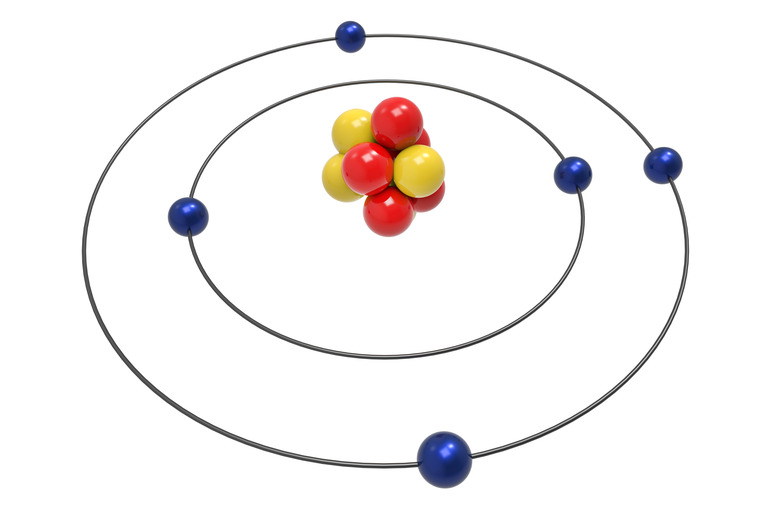How To Calculate The Volume Of An Atom
Atoms are the tiny, complex building blocks of all matter. In a chemistry or physics class you might be asked to calculate the volume of an atom. This calculation is often done as a preparatory step in a more complex calculation to determine the volume of the atom's nucleus. Although the study of atoms can be difficult, the calculation of an atom's volume is not.
Step 1
Find a table that lists the atomic radii–the plural of radius–for all of the elements in the Periodic Table of the Elements. These tables can often be found in your chemistry textbook. The atomic radius is the distance from the center of the atom, the nucleus, to the outer edge of the atom.
Step 2
Copy onto a piece of paper the atomic radius for the atom. For example, an atom of hydrogen has a radius of 53 picometers.
Step 3
Calculate the cubic radius of an atom by multiplying the atomic radius by itself three times. For example, if the atomic radius is 5, you would multiply 5 by itself three times, which equals a cubic radius of 125.
Step 4
Use the mathematical formula for the volume of a sphere to calculate the volume of the atom. The mathematical formula for the volume of a sphere is the fraction four-thirds multiplied by Pi, which is then multiplied by the cubic radius of the atom. Pi, a mathematical constant, is 3.141.
Things Needed
- Calculator
- Pencil
- Piece of paper
- Scientific table of elements with atomic radii
Warning
The calculation of the volume of an atom is based on a simplistic understanding of an atom as a sphere. Whenever you are asked to calculate the volume of an atom, assume it is a sphere, but be aware that an atom is much more complex than a simple sphere as explained by the theories of quantum mechanics.
Cite This Article
MLA
J.D., Andrew Mayfair. "How To Calculate The Volume Of An Atom" sciencing.com, https://www.sciencing.com/calculate-volume-atom-7304875/. 13 March 2018.
APA
J.D., Andrew Mayfair. (2018, March 13). How To Calculate The Volume Of An Atom. sciencing.com. Retrieved from https://www.sciencing.com/calculate-volume-atom-7304875/
Chicago
J.D., Andrew Mayfair. How To Calculate The Volume Of An Atom last modified August 30, 2022. https://www.sciencing.com/calculate-volume-atom-7304875/
